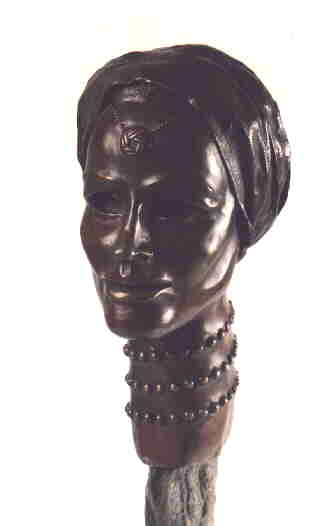return to Home Page
or move on to Goddess Echidne, next chronologically,
or use Her Cyclopedia Index
Myrrha, She-of-the-Bitter-Tree.
MÜrHR1
Alternate meaning: Bitter.
[to Whom the thirtieth day of September, day 273, is dedicated]

Geography/Culture: Syrian, Alexandrian Greek.
Description: Virgin Mother Goddess of the sea, trees, healing, birth, death and resurrection; eponym of myrrha.
To Whom Sacred: myrrh (or balsam), the resinous gum of an Arabian tree used for perfume, incense and embalming the dead (myrrh is used as incense at festivals of Adonis); sweet cicely (plant -- is called myrrh, cicely is a variant of cecelia); lion (calendar emblem of the first part of the year divided into three); boar (according to some versions, the boar which killed Adonis also brought him to birth by opening the bark of the myrrh-tree, his Mother, with its tusk, thereby allowing his birth).
Male Associates: son, Adonis, Lord, vegetation god, by Her father/lover Theias, Diviner, king of Assyria, or, some say, by Cinyras, Plaintive-Cry, king of Cyprus.
Titles/Variants, etc:
- Daughter of
Cenchreis, K]NXAS, {Spotted-Serpent}.
- Also called, or variant Myrine, Sea-Goddess, below.
- Also called,
Smyrna, The-Sea-Goddess, which is Myrine, Sea-Goddess, preceded by the definite article.
- Also called Myrtea, Sea-Goddess, below.
Source: EBv1/212; FJG.GB/391; GR.GMv1/72; GR.GMv2/131, GR.WG/371; KD.WWGRM/55; RHJ.HGM/124.
Myrine, Sea-Goddess.
MÜrHENA
Geography/Culture: Eastern Mediterranean, Lemnos.
Description: Mother Goddess of the moon and the sea; Her rites save sailors from shipwreck; Mother of Gods; Eponym of the city Myrine; She Whose society is gynocratic.
To Whom Sacred: woad (used by Her people); armed priestesses; the Phrygian blessing (the thumb and first two fingers raised, the fourth and little finger bent downards -- originally given in Her name it was adopted by the Catholic church in the name of the trinity).
Titles/Variants, etc:
- The name of an Amazon Queen.
- Perhaps a form of Marienna, High-Fruitful-Mother-of-Heaven, Who is linked with Mary,
{Sea-Queen}.
- The Trojans worshipped Her as
Leaping-Myrrhine.
- Also called, or variant,
Myrrhine.
Source: Graves GMv2 130-1, 227, 235; Graves WG/371
Myrtea, Sea-Goddess.
MÜTY1
Geography/Culture: Eastern Meditteranean.
Description: Goddess of the sea as destroyer.
To Whom Sacred: myrtle-tree, its berries and resin, (sacred -- to Aphrodite all over the Mediterranean -- partly from growing best near the sea, partly for its fragrance, but primarily because it was a tree of death: as ever-green, a token of the resurrection of the dead king of the year -- it's leaves and berries (which ripen in December) have medicinal qualities attributed to them; myrtle boughs (Greeks emigrants carried myrtle boughs when intending to found new colonies).
Titles/Variants, etc:
- Title of Aphrodite, Froth-of-Replication.
- Variant
Myrto.
- Longer form,
Myrtoessa.
Source: Graves WG 262.
worked on: September 1995; August 1991.
Return to the top of this document.
